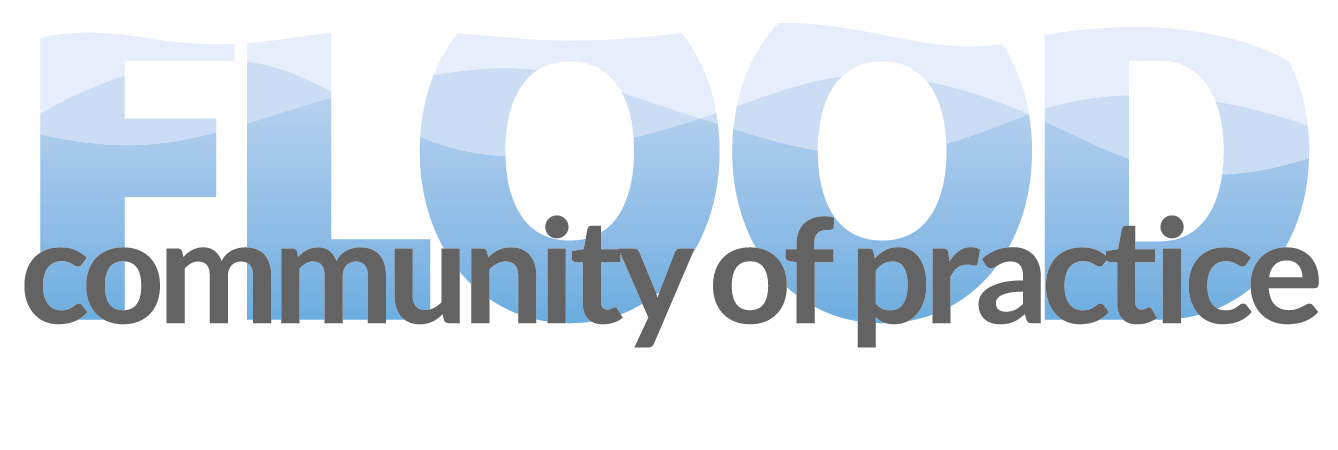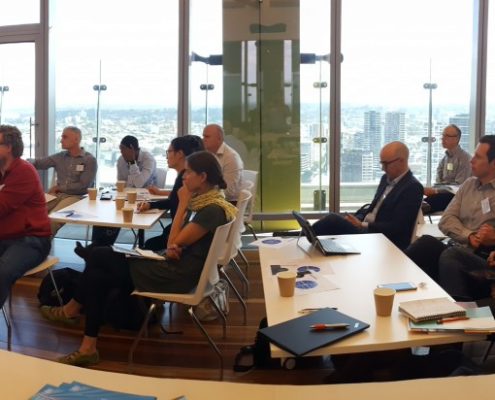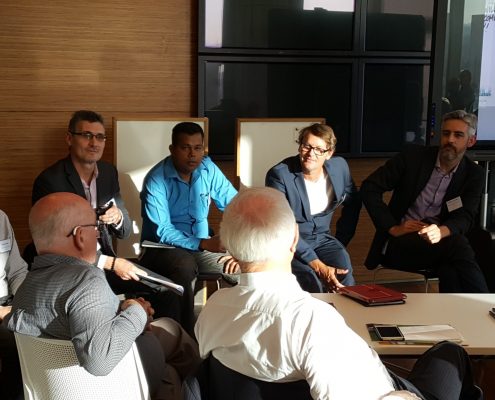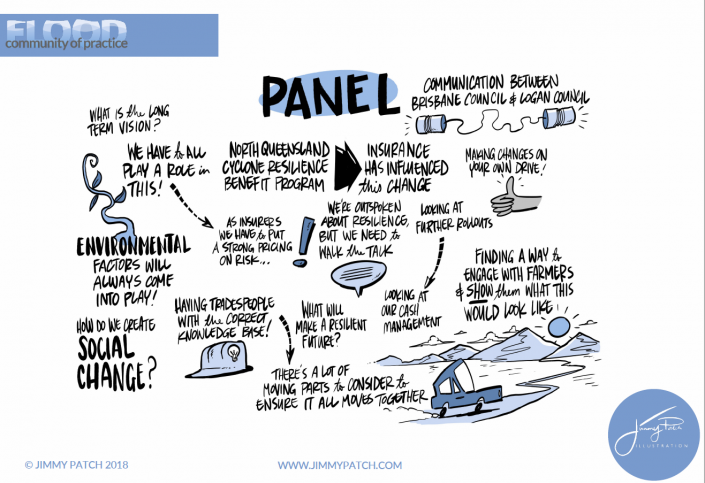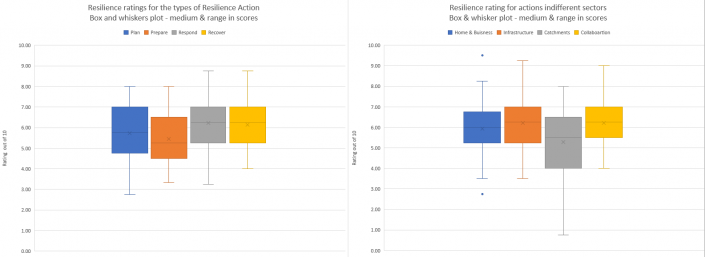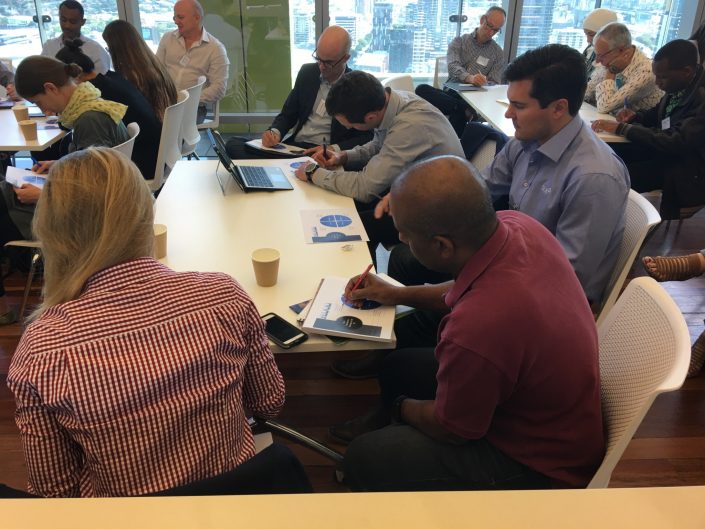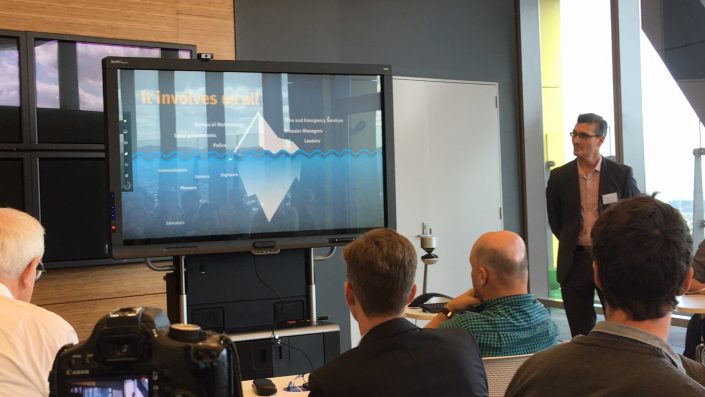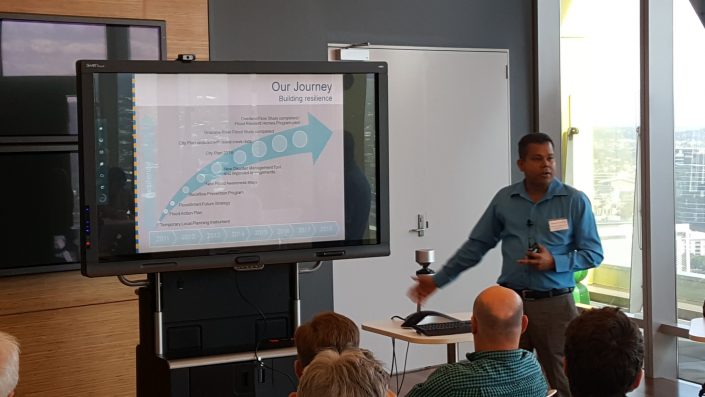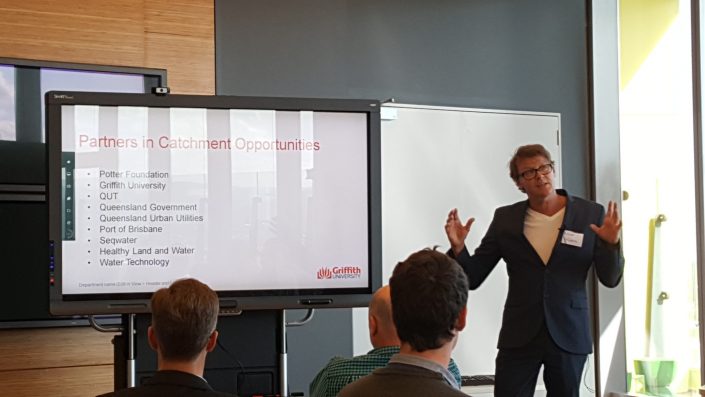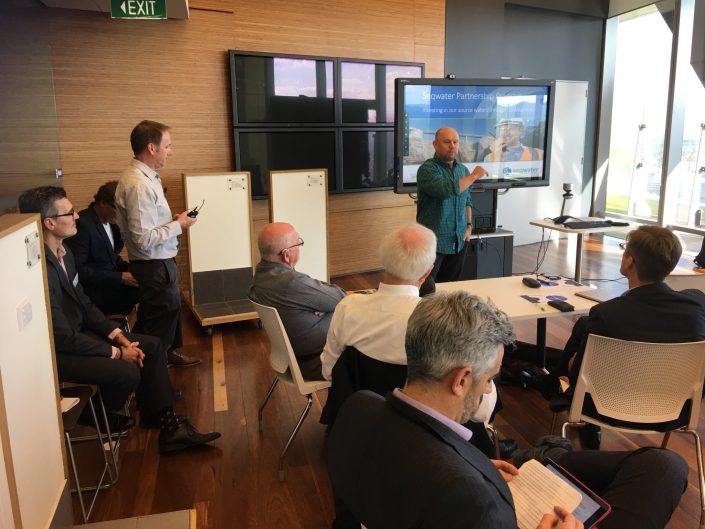A deep dive into the meaning of “resilience of people and places to natural hazards” – what does it look like & how can policy translate into action
A mix of guest presentations and a wealth of participant experience on (i) ratings of the status of resilience in SEQ, (ii) how it can be characterised and (iii) group mapping of resilience initiatives on the ground in SEQ: There was plenty to share from this Friday 21 September 2018 workshop – Please take some time to explore the responses – enjoy and be fascinated!!!
Purpose of the workshop
In our various workplaces, the phrases “Resilience” and “Respond to natural hazards” is becoming more common and in many community focused programs it can be a design element. So at this workshop it was timely to explore these concepts and see what it might means for the various professionals involved in our network.
The specific focus for this event was to:
- Share and build awareness on the Policy focus on Resilience to Natural Hazards in Queensland http://qldreconstruction.org.au/resilientqueensland
- Showcase examples of proactive resilience building initiatives in SEQ
- Provide workshop participants with an opportunity to share their experiences on existing resilience initiatives and where opportunities and critical gaps exist and create a visual map of programs and initiatives, connected through the PPRR approach
Welcome to new participants
A full house at Suncorp Conference saw 58 participants join the Flood Community Practice team. A special welcome to new participants from Volunteering Queensland, the Australian Rivers Institute Building Catchment Resilience – Potter Foundation Project team, FloodMapp, International RiverFoundation, Queensland Health, City Smart, University of the Sunshine Coast, QFES, QUU, SLR Consulting, Moreton Bay Regional Council and Healthy Land & Water. Nice to have new colleagues join the collective to share their experiences and we look forward to your ongoing interest.
Workshop presenters taking us from Resilience Policy to Implementation & their Presentations
The Resilience Policy setting in Queensland – a framework for shared solutions to common problems
Mark Drew – Director Mitigation – Queensland Reconstruction Authority
Brisbane Flood Resilient Homes Program
Ouswatta Perera – Senior Engineer, Flood Policy and Planning – Brisbane City Council
Building catchment resilience – Ian Potter Foundation Project
Dr Adrian Volders – Project Director – Australian Rivers Institute, Griffith University
SEQwater Partnership Program – Investing in our source waters through communities
Greg Greene – Principal, Source Protection Planning, Seqwater
A visual summary of some of the workshop highlights – just click on each image below to expand it – were captured by our event partner Jimmy Patch.
What else left a major impression for you? ……………………………………. You have a few ideas that you would like to explore, share and seek comments from other Flood CoP participants?
Then come and share your ideas at our LinkedIn – Flood Community of Practice group – join now
Resilience Ratings – What did the participants think of our collective efforts so far???
At the start of the workshop all of the participants – undertook a quick stock take of what they thought was a rating out of 10 for the various aspects of the resilience story. They are relative scores – with each person setting their own criteria on what was good & what was poor.
Scoring was done for a combination of:
- Types of resilience actions – Plan, Prepare, Respond & Recover
- Different sectors or setting in which resilience has been applied – Home&Business, Infrastructure, Catchments and Collaboration
The pooled results across the various combinations are graphed below (click on the image to expand for viewing) and show some interesting patterns. The group results suggest that:
- Respond & Recover actions are considered more resilient than Plan & Prepare efforts
- The medium score for Prepare is the lowest of the resilience actions
- Infrastructure had the slighter higher resilience rating of all the elements, whereas action in the catchments & regional settings were the lowest and the range of individual scores saw some very low ratings scored.
What are the characteristics of resilience?
After hearing of the various urban, rural and catchment based approaches to building resilience, each participant was asked to describe resilience to natural hazards in terms of:
(i) what does it look like
(ii) how is it implemented?
(iii) how is involved?
A rich picture for urban and rural settings follow – long with the features of resilience in partnerships.
What initiatives for resilience already exist in South East Queensland?
This workshop to explore resilience, in the context of being better prepared for future natural hazards and better managing event impacts, not only considered what the challenge are as our local communities in SEQ grow and we live through periods of changing weather conditions – but also spent some time at the end of the workshop reflecting on what is already in place.
In small groups of 5 to 7 participants, a rich picture of existing activity in SEQ was listed and drawn. Click here for the details of each group and as you reflect on each group response it is interesting to see both a common set of activity – but also some diversity in the listings – which reflected the different roles and organisations of the participants.
Encouragingly, SEQ already has plenty in place. Is it enough, do we need more, are their key gaps and what are the next steps?
We would enjoy any further additions or response – so please join the discussion at the LinkedIn – Flood Community of Practice Group.
